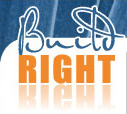Wind loads 1
Wind loads have become very important in recent years due to the extensive use of lighter materials and more efficient building techniques. A Victorian era building with heavy masonry, timbers and slate tiles will not be affected by the wind load, but the structural design of a modern steel clad industrial building is dominated by the wind load.

Wind blowing against the building results in positive pressure which pushes against the building.
A vortex A vortex is a whirling movement of air. results in negative pressure which pulls at the building.
Wind acts both on the main structure and on the individual cladding units of a building. The structure has to be braced to resist the horizontal load and anchored to the ground to prevent the whole building from being blown away if the dead weight of the building is not sufficient to hold it down. Because of this, careful placement of bracing or other means of maintaining stability is necessary. It is also important to tie the roof materials to the supporting battens or rafters.
